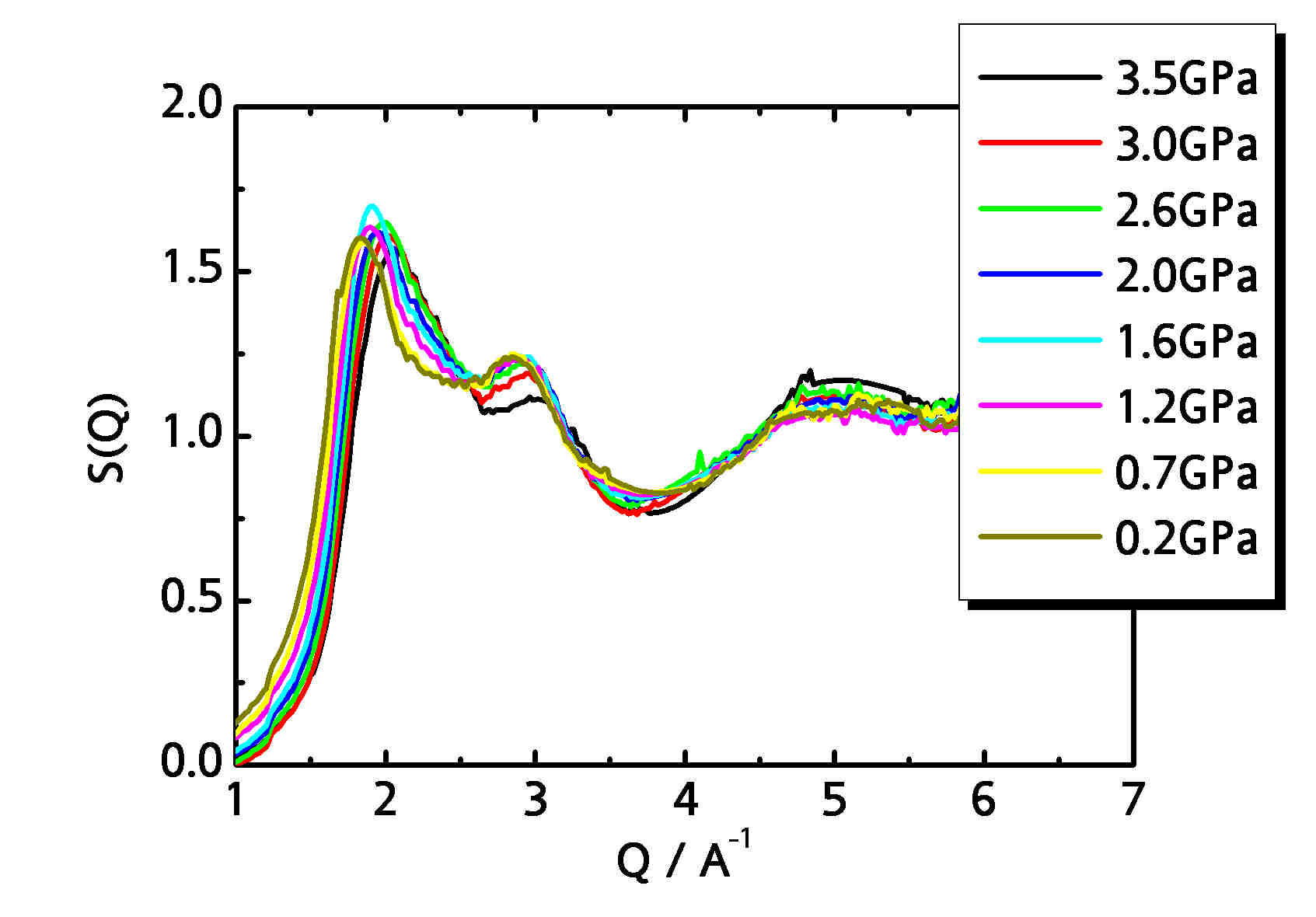Pressure-induced structural change in liquid CdTe studied by in-situ high-temperature high-pressure angle-dispersive x-ray diffraction
Inquiry number
SOL-0000001003
Beamline
BL22XU (JAEA Actinide Science I)
Scientific keywords
| A. Sample category | inorganic material |
|---|---|
| B. Sample category (detail) | metal, alloy, semiconductor, amorphous, glass, liquid, melt |
| C. Technique | X-ray diffraction |
| D. Technique (detail) | powder diffraction, wide angle scattering |
| E. Particular condition | high pressure (press), high-T (> 500 C) |
| F. Photon energy | X-ray (4-40 keV), X-ray (> 40 keV) |
| G. Target information | chemical bonding, local structure |
Industrial keywords
| level 1---Application area | Semiconductor |
|---|---|
| level 2---Target | compound semiconductor |
| level 3---Target (detail) | |
| level 4---Obtainable information | local structure |
| level 5---Technique | diffraction |
Classification
A80.12 semiconductor, M10.20 powder diffraction
Body text
Angle-dispersive X-ray diffraction method is a powerful technique to study structural change of a matter induced at high temperatures and high pressures. Using this technique, one can measure the structures of liquids or glasses as well as those of crystalline solids. They often show significant or dramatic changes under such extreme conditions. The high-brilliance, high-energy monochromatic x-rays available on BL22XU allows collection of precise data even in a shorter time in comparison with a conventional energy-dispersive x-ray diffraction method. The figure shows pressure dependence of structure factor, S(Q), measured for liquid CdTe. These data reveal that the local structure evolves gradually from a four-fold coordinated structure to a six-fold coordinated structure as the pressure increases from 0.2 to 3.5 GPa.
Figure Pressure dependence of structure factor S(Q) for liquid CdTe
Source of the figure
Private communication/others
Description
日本原子力研究所の服部高典研究員
Technique
Source of the figure
No figure
Required time for experimental setup
48 hour(s)
Instruments
| Instrument | Purpose | Performance |
|---|---|---|
| Cubic-type multi-anvil press | In-situ X-ray diffraction and absorption measurements under high temperature and high pressure | Temperature pressure conditions: About 12 GPa at room temperature, About 2000K at 6 GPa |
References
| Document name |
|---|
| T.Kinoshita, T.Hattori, T.Narushima and K.Tsuji, Phys.Rev.B, 72, 060102(R) (2005) |
Related experimental techniques
Questionnaire
The measurement was possible only in SPring-8. Impossible or very difficult in other facilities.
Ease of measurement
With a great skill
Ease of analysis
With a great skill
How many shifts were needed for taking whole data in the figure?
Four-nine shifts

